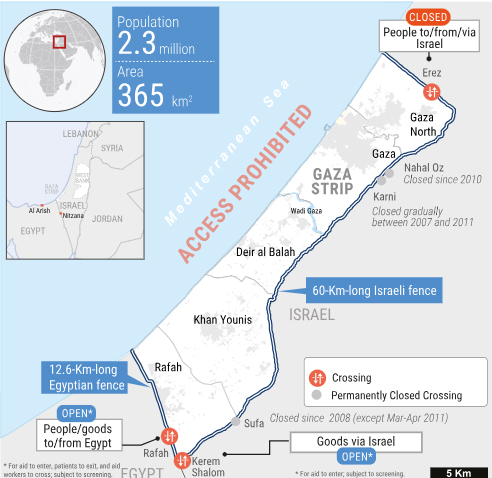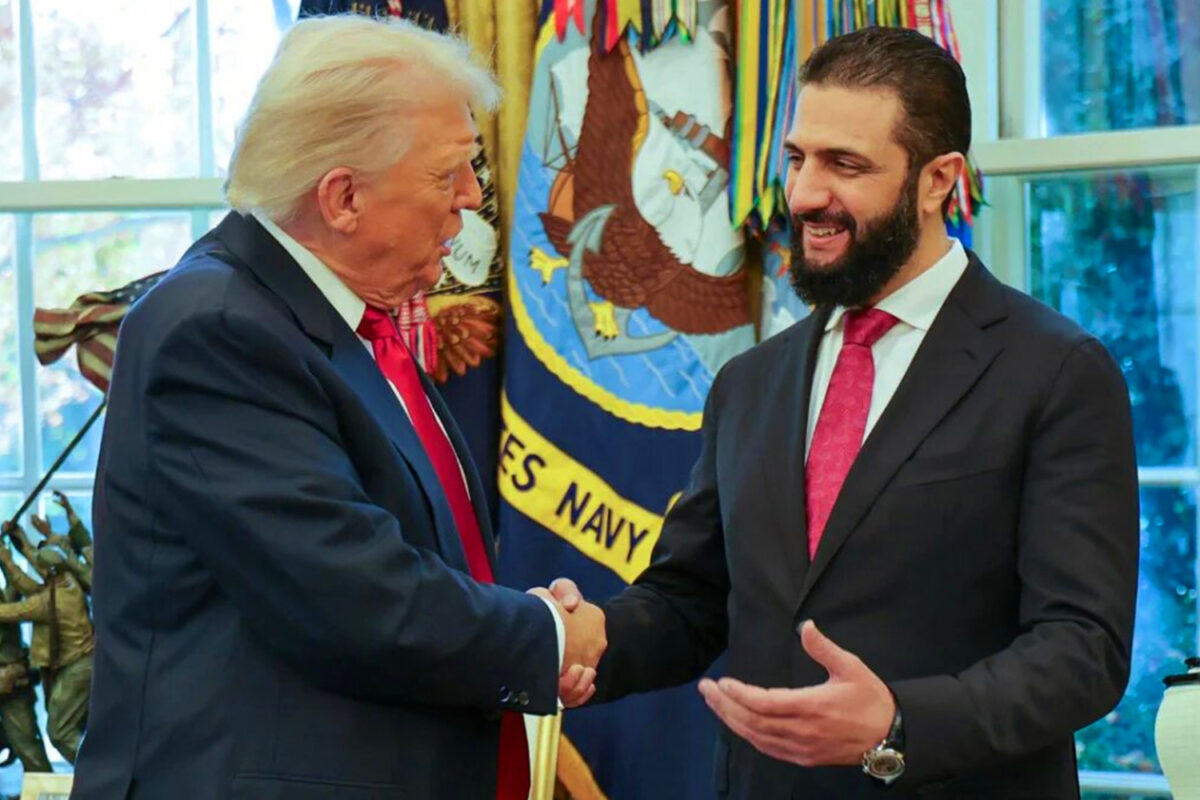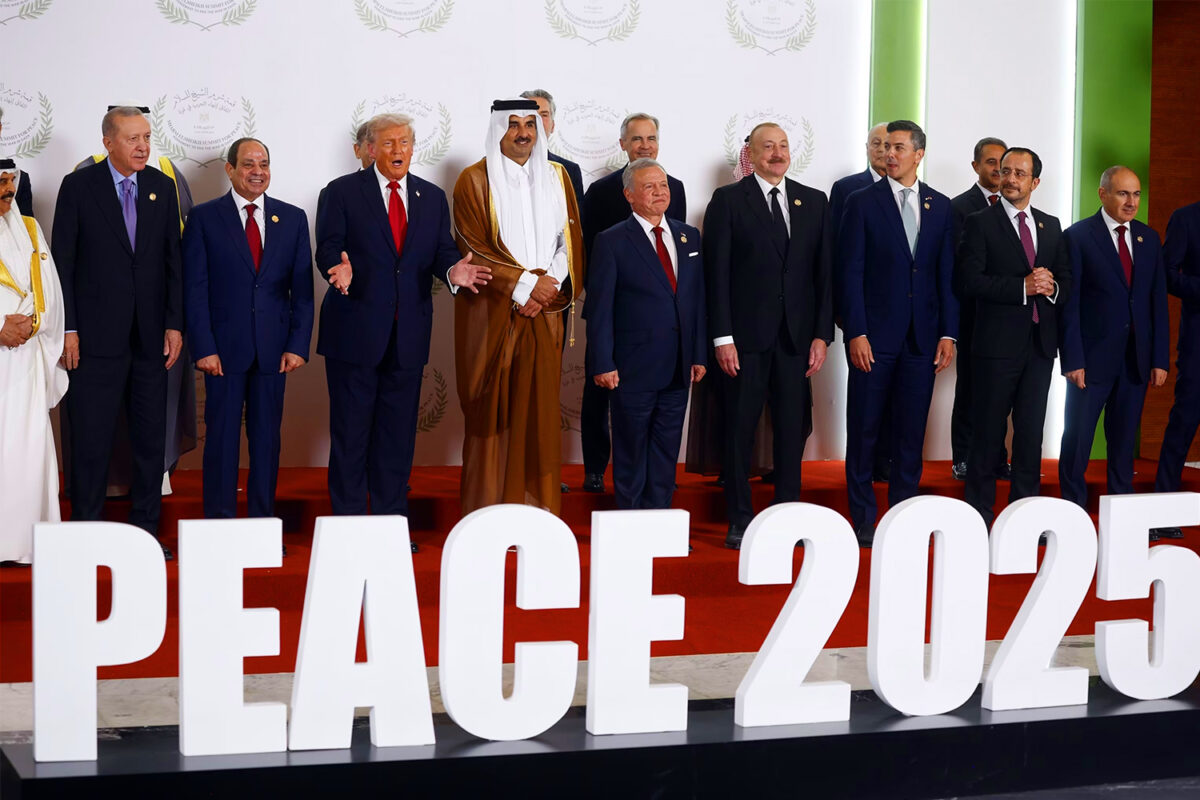As we fast approach the two-year anniversary since the events of October 7th, 2023, Gaza faces an unprecedented humanitarian disaster. Once described as one of the most densely populated areas on Earth, Gaza is now being called the “hungriest place in the world.” On July 19th alone, 18 people reportedly died from starvation. Images of malnourished children and desperate families queuing for scarce food aid have become emblematic of the crisis. In response to international criticism, Israeli officials have placed blame on Hamas and accused the UN of inefficient aid distribution. Critics argue that what is unfolding in Gaza is not a humanitarian failure, but a deliberate strategy—a carefully constructed architecture of starvation.
A Legacy of Dependency and Control
Established in 1949 in the aftermath of the Nakba, the United Nations Relief and Works Agency (UNRWA) was created to support displaced Palestinians with food, shelter, education, and healthcare. Gaza became a refuge for those expelled from historic Palestine. Following Israel’s occupation of Gaza in 1967, and even after its ‘withdrawal’ in 2005, Israel maintained de facto control over Gaza’s borders and resources. Over time, Gaza became increasingly dependent on foreign aid. Leaked Israeli documents revealed policies calculating the minimum caloric intake required for survival—a practice human rights groups likened to collective punishment.
Pre-October 7th
 Before the events of October 7th over 80% of Gaza’s 2.3 million population relied on international aid that included food, medical supplies, fuel and basic services such as water and electricity. This was supplied by UNRWA, the World Food Programme (WFP) and NGOs like Doctors without Borders (Médecins Sans Frontières (MSF)) and the Red Crescent. This aid got into Gaza through the Kerem Shalom Crossing, which was the main crossing for humanitarian aid, goods, and fuel, which was controlled by Israel, with tight security inspections. There was also the Rafah Crossing, which was controlled by Egypt who synchronized with Israel and was used for medical evacuations and aid. Egypt only opened this crossing intermittently and often under political conditions. There was also the Erez Crossing, which was primarily used for people (e.g., medical patients) and occasionally for humanitarian aid controlled by Israel.
Before the events of October 7th over 80% of Gaza’s 2.3 million population relied on international aid that included food, medical supplies, fuel and basic services such as water and electricity. This was supplied by UNRWA, the World Food Programme (WFP) and NGOs like Doctors without Borders (Médecins Sans Frontières (MSF)) and the Red Crescent. This aid got into Gaza through the Kerem Shalom Crossing, which was the main crossing for humanitarian aid, goods, and fuel, which was controlled by Israel, with tight security inspections. There was also the Rafah Crossing, which was controlled by Egypt who synchronized with Israel and was used for medical evacuations and aid. Egypt only opened this crossing intermittently and often under political conditions. There was also the Erez Crossing, which was primarily used for people (e.g., medical patients) and occasionally for humanitarian aid controlled by Israel.
October 7 and the Escalation of Siege Tactics
In the immediate aftermath of the October 7th attacks, Israeli Defense Minister Yoav Gallant declared a “complete siege” of Gaza, stating, “there will be no electricity, no food, no fuel.” This marked a shift from blockade to comprehensive deprivation. Israeli ministers expressed similar sentiments, advocating total restriction until hostages were released. Although Gaza has long endured constrained access to aid, the images of starvation and famine conditions triggered global concern, even among some of Israel’s traditional allies.
Initial aid obstruction and increased military operations, particularly in northern Gaza, exacerbated conditions. While international pressure briefly resulted in limited concessions, these were short-lived. Renewed offensives, including the May 2024 assault on Rafah and subsequent evacuations, created a cycle of displacement and aid disruption. In March 2025, following a temporary ceasefire, Israel reinstated a complete blockade. International criticism compelled Israel to permit minimal aid, with officials stating such gestures were necessary to maintain diplomatic support.
Starvation as a war strategy has been a tactic used since ancient times, Israel’s modern version of this age-old strategy is based on its own pillars which act as the architecture of starvation.
Pillar 1: Blocking Aid
A central mechanism of deprivation is the restriction of humanitarian aid. According to UNRWA, adequate supplies exist to feed Gaza’s population, but Israeli approval is required for entry. Most aid remains stockpiled in Egypt, awaiting clearance. Israel points to this accumulation to deflect blame, accusing aid agencies of poor distribution.
Currently, an average of only 28 aid trucks enter Gaza daily—a sharp decline from the 600 allowed during the temporary ceasefire. By comparison, during the January-March ceasefire, Israel allowed 600 trucks to enter the territory daily, demonstrating the capacity to process far more than is currently allowed. Israel imposes arbitrary, shifting restrictions on permissible items. Goods that have been denied entry include tents of the wrong colour, nail clippers, crutches, hygiene kits, seeded fruits, medical equipment and even baby formula. Aid trucks often must unload at Israeli checkpoints, requiring Gazan trucks to navigate dangerous, damaged roads for pickup, all while facing a complex and inconsistent permit process.
Israeli forces routinely fire on aid convoys, with over 300 UN workers killed— the highest number ever recorded in the UN’s history. Furthermore, Israeli authorities have been accused of tacitly enabling extremist attacks on convoys by tipping off groups intent on sabotaging aid.
an average of only 28 aid trucks enter Gaza daily—a sharp decline from the 600 allowed during the temporary ceasefire. By comparison, during the January-March ceasefire, Israel allowed 600 trucks to enter the territory daily, demonstrating the capacity to process far more than is currently allowed
Pillar 2: Criminal Gangs and the “Looting Valley”
A second obstacle involves the emergence of gang-controlled zones along aid routes. The few aid trucks that make it into Gaza are forced through the “looting valley,” where criminal gangs intercept the convoys and steal their supplies. Benjamin Netanyahu admitted in June that Israel was arming, financing and protecting criminal gangs, including ISIS-linked criminal networks as well as the notorious Abu Shabab gang. These gangs have been responsible for the overwhelming majority of looting in Gaza. In November 2024, gangs reportedly looted 97 out of 109 trucks in a single day.
These criminals often beat, kill, maim and hold truck drivers hostage which scares others away from even attempting to reach Israeli crossings to collect aid. Israel then blames UN agencies for failing to collect the food accumulating at the crossings. In May 2024, the Israeli military claimed it cleared 760 aid truckloads within 12 days, but only 238 were collected by Gazan trucks, half of which were looted. This means nine trucks per day reached the population—less than 2% of the minimum 500-600 trucks needed for basic survival.
This manufactured looting crisis not only limits aid delivery, but has seen Israel push the trope blaming Hamas. Internal Israeli documents reportedly showed no evidence of Hamas involvement in over 100 looting cases. In fact, Hamas-affiliated police had once helped secure convoys, until Israeli strikes targeted these units.
Benjamin Netanyahu admitted in June that Israel was arming, financing and protecting criminal gangs, including ISIS-linked criminal networks as well as the notorious Abu Shabab gang
Pillar 3: Undermining Aid Agencies
The third prong of this strategy involves discrediting and dismantling established aid organizations.
With UNRWA, Israel accused its employees of being involved in the October 7th attack. The UN launched an internal investigation, and 9 of the 12 accused staff were dismissed before any investigation even began. Major donor countries suspended or paused funding to UNRWA. UN Secretary-General António Guterres ordered an independent review led by former French foreign minister Catherine Colonna.
The report, released in April 2024, found no systematic ties between UNRWA and Hamas. Israel never provided any evidence of its allegations and today UNRWA has not seen its funding reach the levels prior to the allegations.
Even prior to the malicious allegations Israel had struck dozens of UNRWA facilities from schools, shelters, and distribution centres. 180 UNRWA staff members have been killed—the highest toll for any UN agency in a single conflict.
Similar actions have occurred with other humanitarian organisations. Israel killed 7 aid workers from the World Central Kitchen (WCK) in April 2024. This was despite the fact the convoy was clearly marked and coordinated with Israeli authorities. Similarly, the International Committee of the Red Cross (ICRC), its staff, clinics and convoys have regularly come under fire from the IDF. Doctors Without Borders have accused Israel of repeated violations of international humanitarian law, including attacks on their medical infrastructure, they are regularly forced to evacuate hospitals and suspend activities.
Israel never provided any evidence of its allegations and today UNRWA has not seen its funding reach the levels prior to the allegations
Any organisation who has tried to fill the organisational vacuum, has been targeted by Israel, which has repeatedly bombed volunteers attempting to secure aid trucks, prevent looting and ensure orderly distribution. During a notable instance in June, some Gazan clans unaffiliated with Hamas stepped up to protect aid convoys; Israel immediately responded by halting the entry of aid into Gaza and targeting multiple volunteers.
Pillar 4: Israel’s Hunger Games
The most dystopian pillar of Israel’s starvation strategy has been Israel’s establishment of the Gaza Humanitarian Foundation (GHF). Launched in May 2024, and operated by private American security contractors. The start-up entity has deliberately targeted and displaced all other aid organisations operating in Gaza. Since the GHF launched operations, its sites have become notorious for daily massacres of aid seekers. The organisation has also been widely criticised for its inadequate provision of food, at best distributing the contents of 20 trucks per day and opening arbitrarily for a few minutes each day.
The unstated purpose of the GHF is to take distribution out of the hands of professionals who are actually able to meet the basic needs of the people and put it in the hands of those answering to the Israeli military. This allows Israel to weaponise aid distribution and starvation to achieve its aim: to corral the surviving population into ever-shrinking zones under Israeli control. That is why the GHF reduced the active distribution centers from 400 to just four, making it nearly impossible for most people in Gaza to reach those sites without relocating.
In the daily chaos hundreds of thousands of Palestinians clamour to reach the food at these sites, GHF security personnel and the Israeli military use live fire, grenades and tank shells—adding a layer of misery and suffering to the lives of innocent civilians who must choose between risking death from starvation or from bullets. From May 27th to July 31st, 859 people were killed near Gaza Humanitarian Foundation sites, according to a UN report released on July 31st.
The GHF also serves to create the appearance that aid is still being distributed in Gaza—without actually delivering it to the population in any meaningful or sustained way. It is a scheme designed to give Israel enough cover to prevent “a total collapse of international legitimacy for continuing the war.” It also removes credible international observers from respected aid organizations witnessing Israel’s genocide from the ground.
This was too much for the original GHFs executive director Jake Wood, who asserted that he: “unequivocally … will not be part of anything that forcibly dislocates or displaces the Palestinian population.” In May 2025, Wood resigned over the organisation’s adherence to humanitarian principles and questioned the organization’s political neutrality. The current executive director Johnnie Moore, is an American evangelical leader.
In the daily chaos hundreds of thousands of Palestinians clamour to reach the food at these sites, GHF security personnel and the Israeli military use live fire, grenades and tank shells
Pillar 5: The Hamas Trope
Israel and its supporters have resorted to the trope of blaming Hamas for stealing aid and being the sole cause of the man-made famine in Gaza. Israeli officials have constantly denied the existence of mass starvation and blame Hamas.
However, in May 2025, the Israeli military acknowledged internally that out of 110 looting incidents it documented, none were carried out by Hamas. Similarly, an internal US government review found no evidence of widespread theft by Hamas of US-funded humanitarian aid in Gaza, contradicting the State Department’s claims that were used to justify backing the controversial Gaza Humanitarian Organisation (GHF). The analysis, conducted by the US Agency for International Development (USAID), looked into 156 incidents of waste, fraud, and abuse reported by partner organisations between October 2023 and May 2025.
The review of the incidents “found no affiliations” with sanctioned groups or foreign terrorist organisations, according to a presentation seen by CNN. There was also no indication that there was a systemic loss due to Hamas interference or theft or diversion.
Blaming Hamas serves to justify harsh measures, deflect international scrutiny, and suppress criticism. Yet it was no coincidence that all of the barriers to aid manufactured under Israel’s five-pronged strategy disappeared during the January ceasefire, when Hamas agreed to release Israeli captives in exchange for the entry of aid. The gangs vanished, the looting stopped, and food reached people directly and in an orderly fashion. Yet even if Hamas were to release all remaining captives, Israeli officials have vowed to resume their war of annihilation, including through starvation. This demonstrates that systemic obstruction was policy-driven, not inevitable.
Conclusion
Israel’s policies in Gaza appear to constitute a multi-pronged strategy in which starvation and deprivation are used as tools of war. By combining aid obstruction, collusion with criminal gangs, the dismantling of aid infrastructure, and the creation of a militarised proxy relief operation, the Israeli government has built what can only be described as an “architecture of starvation.” As international criticism mounts and humanitarian needs reach catastrophic levels, public opinion has turned against Israel and its supporters as many call for urgent intervention and the restoration of neutral aid distribution and the safeguarding civilian lives.




